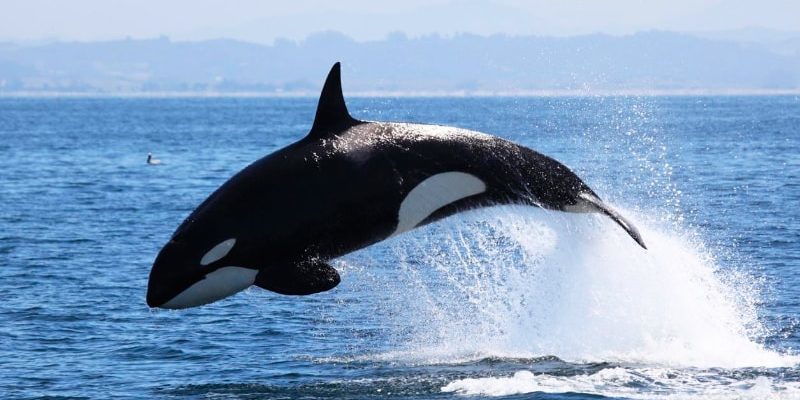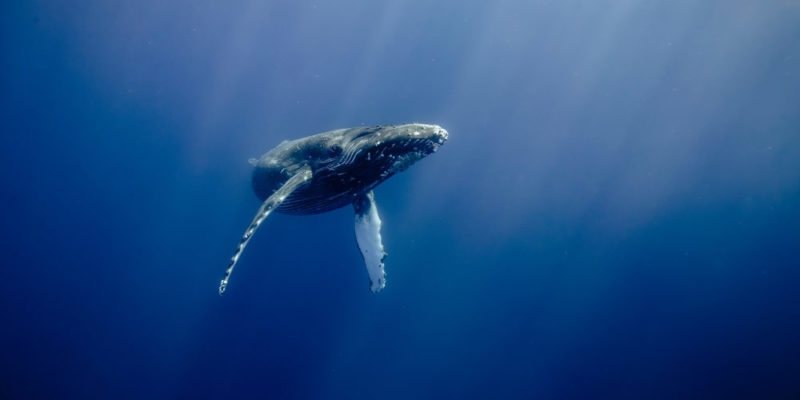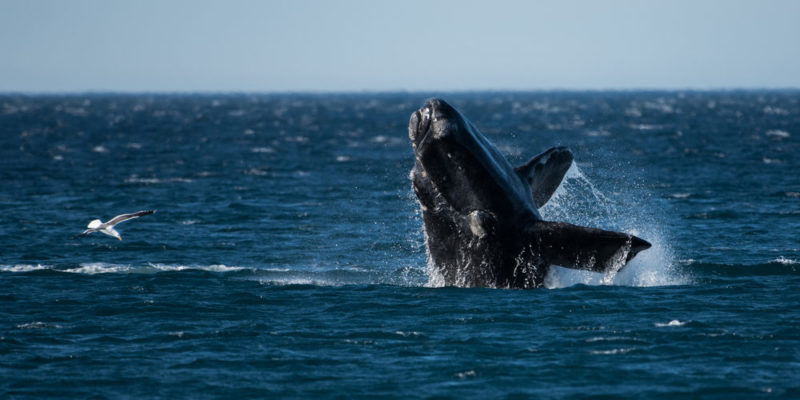We explain what whales are and how is the feeding and reproduction of these cetaceans. Also, its general characteristics and more.
What are the Whales?
Whales are aquatic mammals , in fact they are the largest mammals . They belong to the order of cetaceans and are distributed throughout the world's oceans . Whales are believed to come from animals that returned to the water after having lived for a long time on land.
Whales are warm-blooded animals , unlike fish , which are cold- blooded . Although they have hair on their surface, it is very fine. The function of thermal insulation is fulfilled by the considerable layer of fat that they have under the skin .
Whale characteristics :
Size

On average, the whales measure between 15 and 17 meters and weigh between 50 and 80 tons . The blue whale, however, can measure up to 30 meters and exceed 170 tons. The blue whale is the largest, the dwarf sperm whale is the smallest.
Female whales are generally somewhat larger than male whales.
-
Breathing
 Whales breathe by taking air through their blowhole , so they must approach the surface of the water with some regularity. This is why whales sleep intermittently and rather briefly (for no more than 15 minutes in general), near the surface of the water.
Whales breathe by taking air through their blowhole , so they must approach the surface of the water with some regularity. This is why whales sleep intermittently and rather briefly (for no more than 15 minutes in general), near the surface of the water.
Feeding
They feed on fish , crustaceans , squid, shrimp, krill, and various microscopic microorganisms .
-
Reproduction
Longevity

It is estimated that a whale lives for about 30 years , although this life expectancy can be even longer .
This number varies according to the different species, and even according to sex . For example, in the case of killer whales, females live approximately 10 years longer than males.
-
Hot blood
They live in groups

They generally live in groups of up to four individuals . Mothers are very protective of their young. They have great ability to learn, they are considered very intelligent animals, especially orcas, which are toothed whales. They are generally not aggressive, except when sharks, killer whales, or humans get too close to their young.
-
Swimming
Deep dive

Whales can dive to great depths. Thanks to the fact that they have a greater volume of blood than other mammals and that their blood can carry more oxygen , the whales resist deep submersion for quite long periods (of about an hour).
-
They exhibit echolocation
By means of these systems, whales explore their environment and determine with astonishing precision the distance at which a given object is located. This helps them to orient themselves and to get their prey . There is even talk of the "song of the whales".
Includes threatened species

Unfortunately there is whaling, to use their meat and extract from them some products of industrial interest (such as oil or amber). This has meant that species such as the fin whale (blue whale) or the southern right whale have become endangered species.
-
Coloration
The above content published at Collaborative Research Group is for informational and educational purposes only and has been developed by referring reliable sources and recommendations from experts. We do not have any contact with official entities nor do we intend to replace the information that they emit.
Abubakr Conner brings a diverse skill set to our team, and covers everything from analysis to the culture of food and drink. He Believes: "Education is the most powerful weapon that exists to change the world." .
Leave a reply
Your email address will not be published. Required fields are marked *Recent post

Sport: What Is It, Types, Risks, Features, Characteristics and Examples

Dogs: Emergence, Features, Characteristics, Feeding and Breeds

Story: Definition, Elements, Structure, Features and Characteristics

